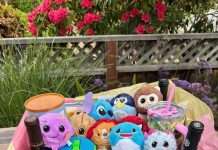We are part of Amazon Associates
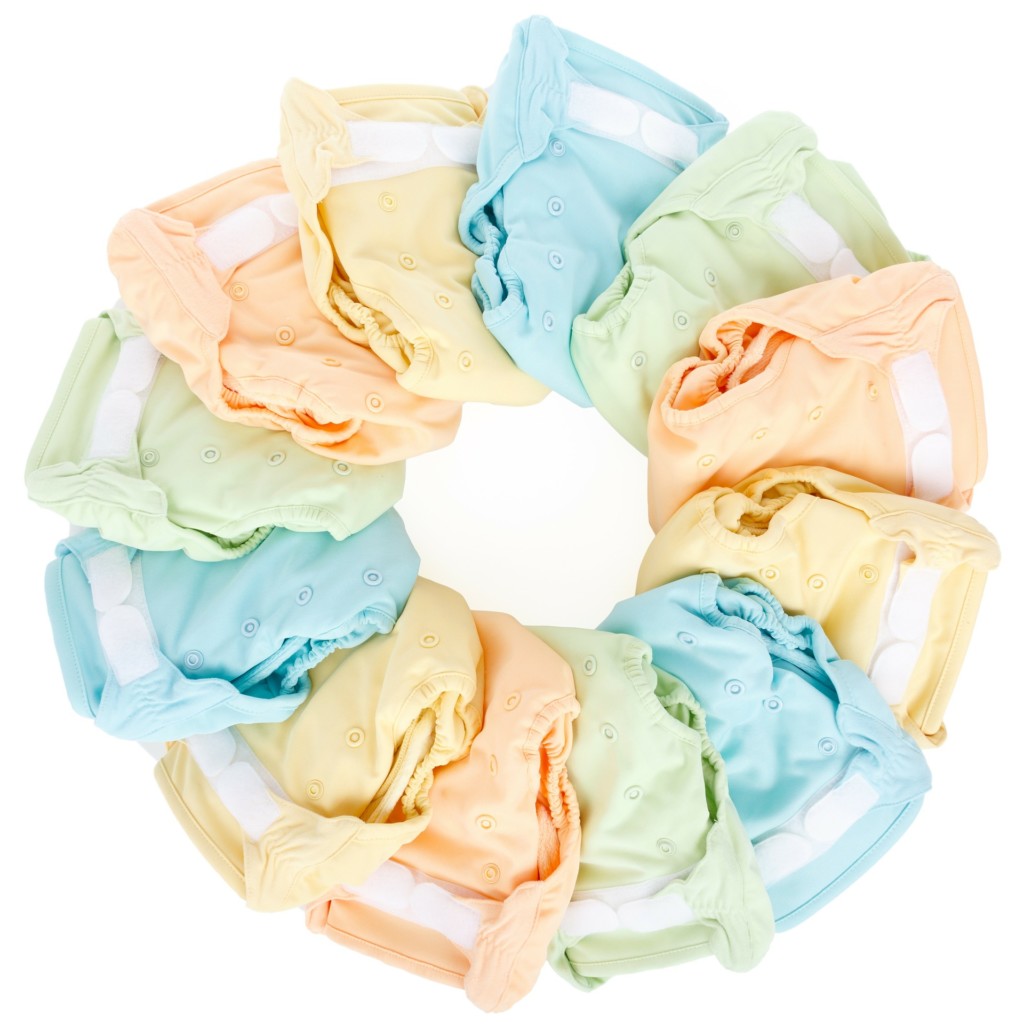 When you hear the words cloth diapers what is the first thing you think of? Loads of stinky, poopy laundry? One more mess you don’t have time for? When I talk to other prospective or new parents about cloth diapers, they always agree with my rationale for choosing cloth (the environment!) but never think it’s something they could do themselves. Everyone has to choose the diapering routine that’s right for their family, but I don’t think cloth diapering always gets fair consideration because it seems so daunting and complicated.
When you hear the words cloth diapers what is the first thing you think of? Loads of stinky, poopy laundry? One more mess you don’t have time for? When I talk to other prospective or new parents about cloth diapers, they always agree with my rationale for choosing cloth (the environment!) but never think it’s something they could do themselves. Everyone has to choose the diapering routine that’s right for their family, but I don’t think cloth diapering always gets fair consideration because it seems so daunting and complicated.
Before my son was born, I knew I wanted to use cloth diapers, but I wasn’t really sure how they worked. The more I read about them online, the more confused I became. There is so much information out there about cloth diapers, much of it conflicting or a matter of personal preference. Cloth diaper technology has come a long way, but the downside is that there is an overwhelming number of brands and types on the market. When you haven’t met your baby yet, let alone tried to put a diaper on them, this makes choosing the “right” cloth diaper even harder. One thing that helped me better understand cloth diapers was reading other people’s cloth diaper routines (like Mama Natural, for example). Something about hearing another family outline their cloth diaper products and laundry strategy made the whole thing feel more relatable and doable.
Our cloth diaper stash and wash routine was inspired by a few different sources (Fluff Love University is a great resource), and we’ve been really happy with what we chose. I’ve even convinced two friends so far to ditch disposables, so who knows, maybe you’ll be next!
Cloth Diapering Options
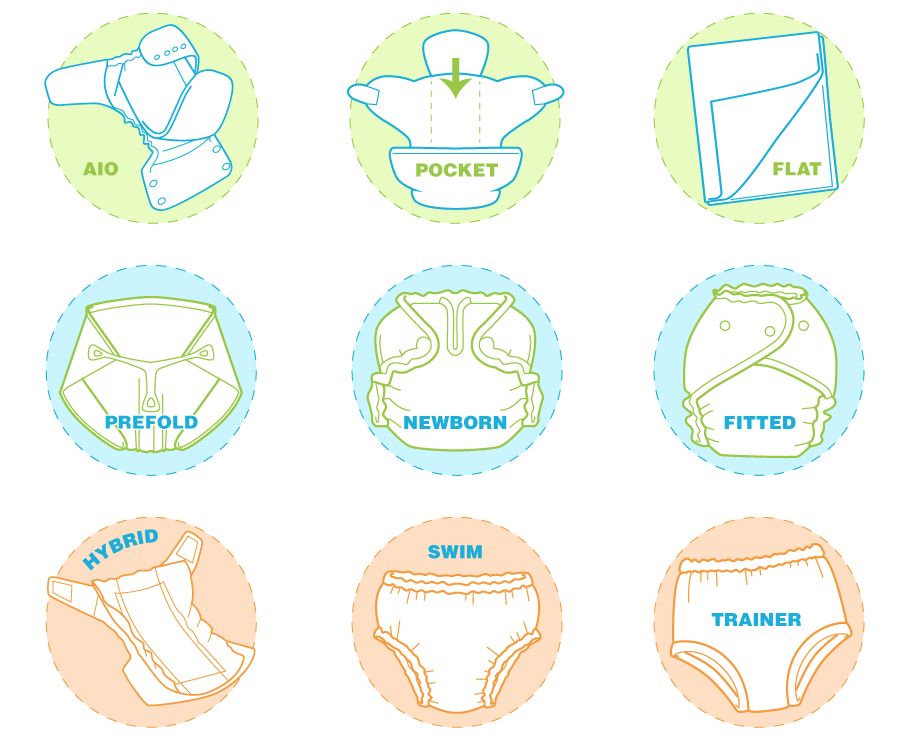
Depending on who you ask, there are between five and nine different types of cloth diapers, including pocket diapers, all-in-ones (AIO), prefolds, and hybrids. We chose to purchase prefolds and covers because they are one of the more affordable options, easy to wash, and are made of all natural fabric. One thing we love is that prefolds and covers are separate pieces. If the cover doesn’t get dirty, we can just change the prefold and reuse the cover. This allowed us to buy half as many covers as prefolds, and has helped prevent the covers from wearing out. Prefolds and covers take a bit more getting used to than an all-in-one diaper, for example, but they have worked excellently and we would highly recommend them.
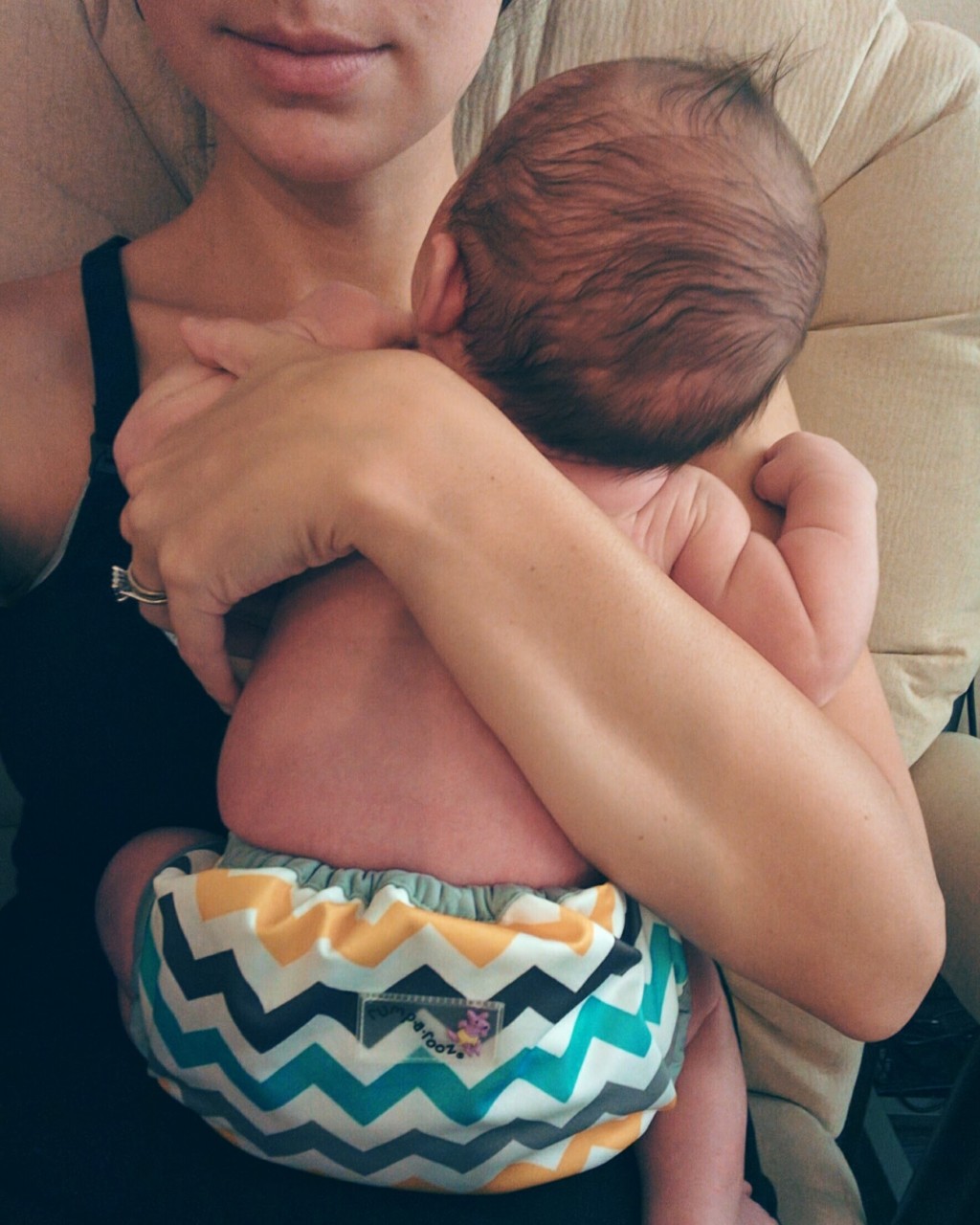 What to Buy
What to Buy
Now, let’s get down to the specifics. Some of your cloth diapering products will change as your baby grows. Below I explain everything I’ve used with my son, and quantities to buy of each product. To make your life even easier, you’ll be able to add the products right to your Amazon cart at the end of the article.
Diaper Covers
The covers are the waterproof piece that looks like an actual diaper and snaps around the prefold (which we’ll get to in a second). We used Rumparooz Newborn Covers (buy 12) when our son was a newborn and then switched to the Rumparooz One Size Covers ( buy 12) when he grew out of them. We will use the One Size covers until he is potty trained and have been really happy with how well they have grown with him.
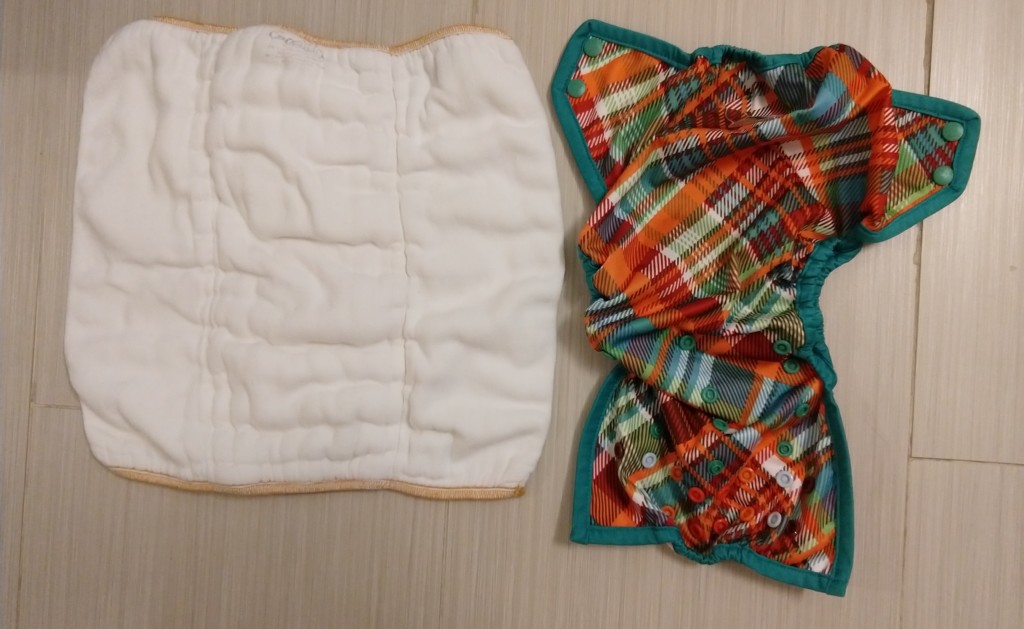
Prefolds & Fasteners
The prefold is the absorbent cloth piece that goes inside the cover. We held the prefolds together with Snappi Cloth Diaper Fasteners in an “Angel Fold” (learn more about folds). We started with GroVia Prefold Size 1 (buy 24), which we used with our Newborn Covers. As our son grew, we transitioned to GroVia Prefold Size 2 ( buy 18), and are now using GroVia Prefold Size 3 ( buy 15), which are big enough to last until he is potty trained.
We purchased fewer prefolds as we transitioned to the larger sizes because older babies and toddlers require less frequent diaper changes than newborns. Once our son became more mobile and diaper changes became trickier, we switched from an Angel Fold to a TriFold. A snappi fastener isn’t required with the TriFold, and the fold is sufficient because he doesn’t have big blowouts or soaking wet diapers like he did as a newborn (he is starting to pee and poop regularly in the potty, so diapers are really just backup these days, yay!).
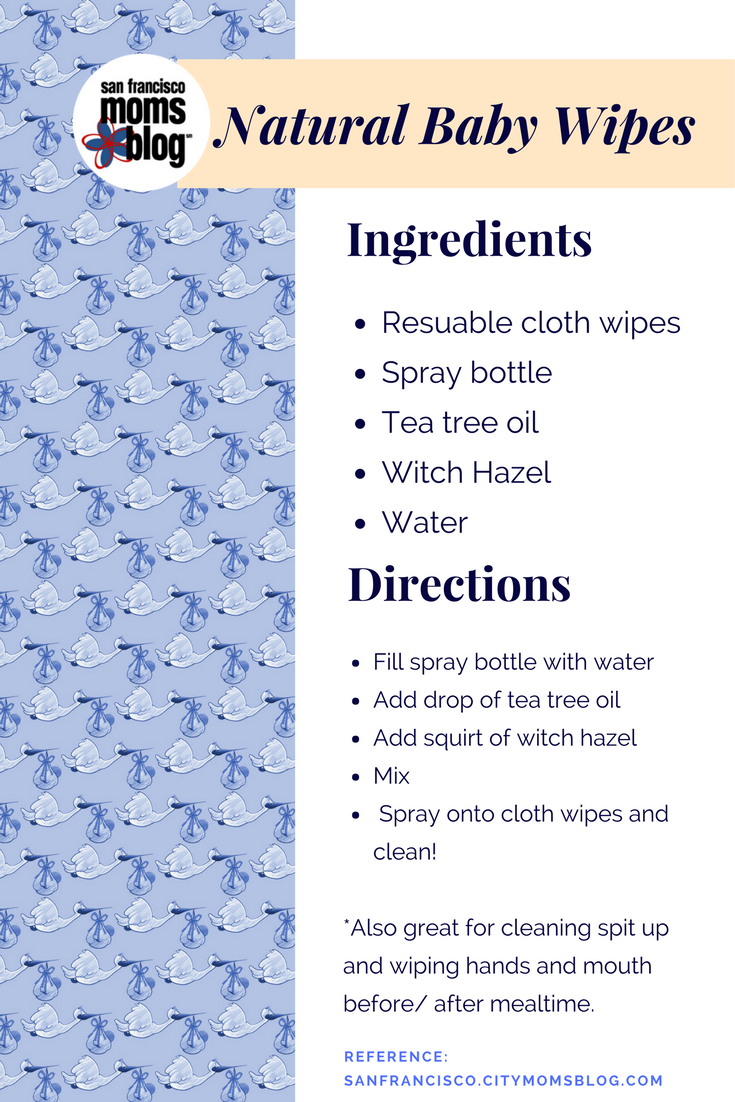
Wipes and Diaper Cream
In addition to the prefolds and covers, we use GroVia Reusable Cloth Wipes (buy 3 packs). We wet our wipes with a spray bottle filled with water, a drop of tea tree oil and a squirt of witch hazel, but you can customize your own wipe solution. Our cloth wipes are amazing multi-purpose wipes. They can also be used to wipe up newborn spit up or to clean hands/face after mealtime.
Okay, we’ve talked diapers, wipes, what else do you need? Diaper cream? It’s important to use diaper creams that won’t harm your cloth diapers and prevent them from absorbing or washing correctly. We use GroVia Magic Stick after every change (up until about one year old) to prevent diaper rash. On the handful of occasions that we noticed some redness or irritation, we used GroVia Z Stick and it cleared up almost immediately.
The benefit of using cloth diapers is that natural fibers breathe well so you might not need diaper cream at all!
What About the Poop?
When babies are exclusively breastfed, their poop is water soluble so you can toss poopy diapers straight into the washing machine. This felt weird and gross at first, but trust me, it works.
Once our son started eating solids, however, we had to figure out what to do with the poop. We chose to use GroVia Bioliners on top of our prefolds, which catch solids and can be flushed. There are a variety of other ways people deal with poopy diapers (ex: spraying each poopy diaper with an attachment connected to my toilet- no thank you!), but the Bioliners are so easy and mess-free, I can’t imagine doing anything else.
The truth is, cleaning up baby poop is no fun and can’t be avoided, whether you use disposables or cloth diapers. Might as well roll up your sleeves and save some trees, if you ask me!
Wash Routine
Once you have all your cloth diaper supplies, you need to establish a wash routine that works for you. We put dirty wipes, prefolds, and covers in a wet bag when we’re on the go, and in our diaper bin lined with a reusable diaper pail liner (buy 2) when we’re at home. We typically wait until we have one or two clean diapers left, and then we start a load of laundry. We used to wash a whole load of dirty diapers every other day, but now wash them about every three days.
When purchasing your diapers, you want to find a balance between having enough so that you’re not doing laundry every day, but not so many that you’re leaving them to sit for long periods of time to get smelly and creepy. We also toss the diaper pail liner in with the dirty diapers to get clean, and also so we don’t have to handle the dirty diapers while loading them into the machine (this is why it’s nice to have two of them). Our system is basically the same as regular clothes laundry: use it ‘til it’s dirty, toss it in the bin, then dump it all in the washer.
When we wash our diapers, we do a rinse cycle with cold water and then a hot cycle with soap, specifically, Tide Original Powder Laundry Detergent. I am all for natural cleaning products, which this, clearly, is not, but when it comes to keeping diapers clean you don’t want to mess around. I was using a more natural laundry detergent originally, and over time my diapers started smelling musty and nasty because they just weren’t getting clean. I did an (insane) amount of research on laundry detergent, and have had great results since switching to this detergent. Now after every wash, my diapers smell fresh and clean! We then dry the prefolds and wipes in the dryer on medium-high heat and hang the covers to dry.
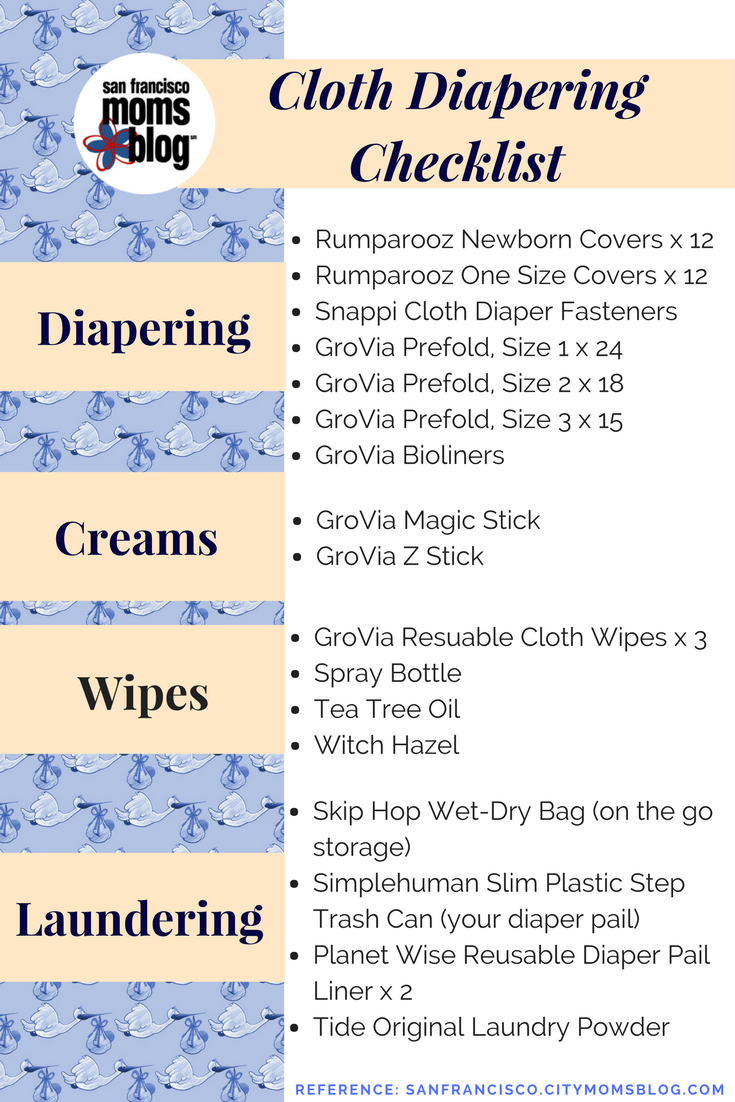
You Can Do It!
I realize now that I’ve written this all down that using cloth diapers is, without a doubt, a bit more involved than using disposables. It is intimidating at first, but my husband and I have found it to be simple and manageable once you get the hang of it. I love hearing my husband tell other dads that “it’s really not a big deal” and that he’s glad we chose cloth diapers. Everyone has to choose the diaper system that makes sense for their family, and I’m happy to say that we love cloth and we wouldn’t do it any other way!
Your Shopping Cart
Click on the products below to add them to your Amazon cart!











